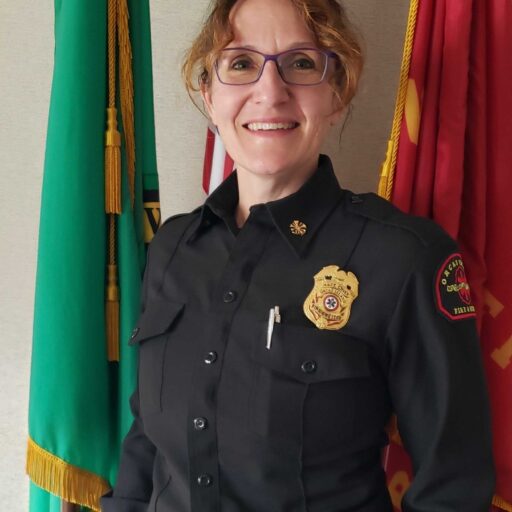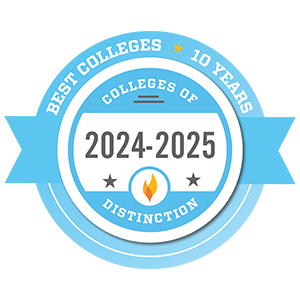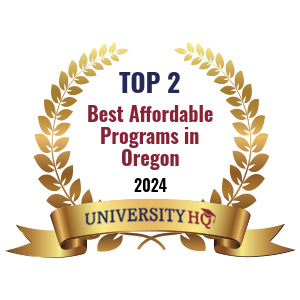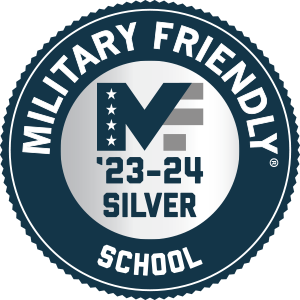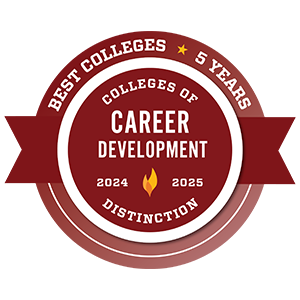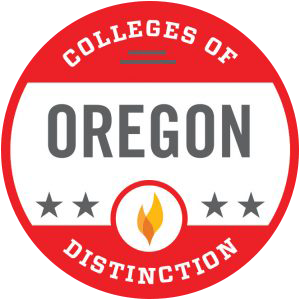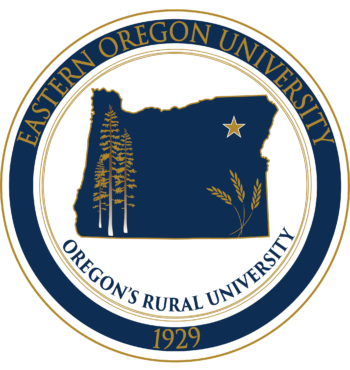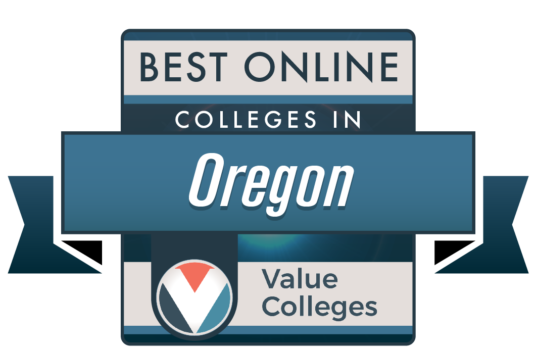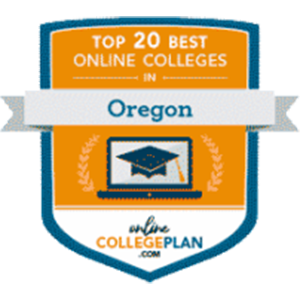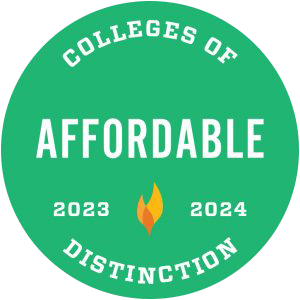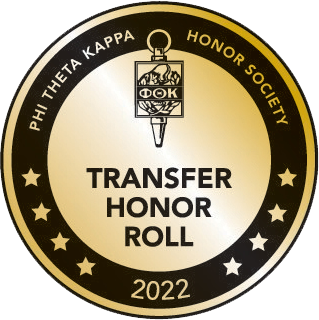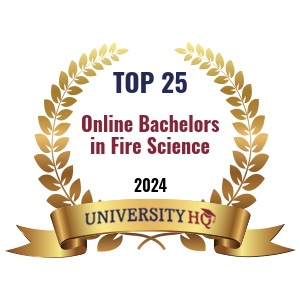B.S./B.A. in Fire Services Administration
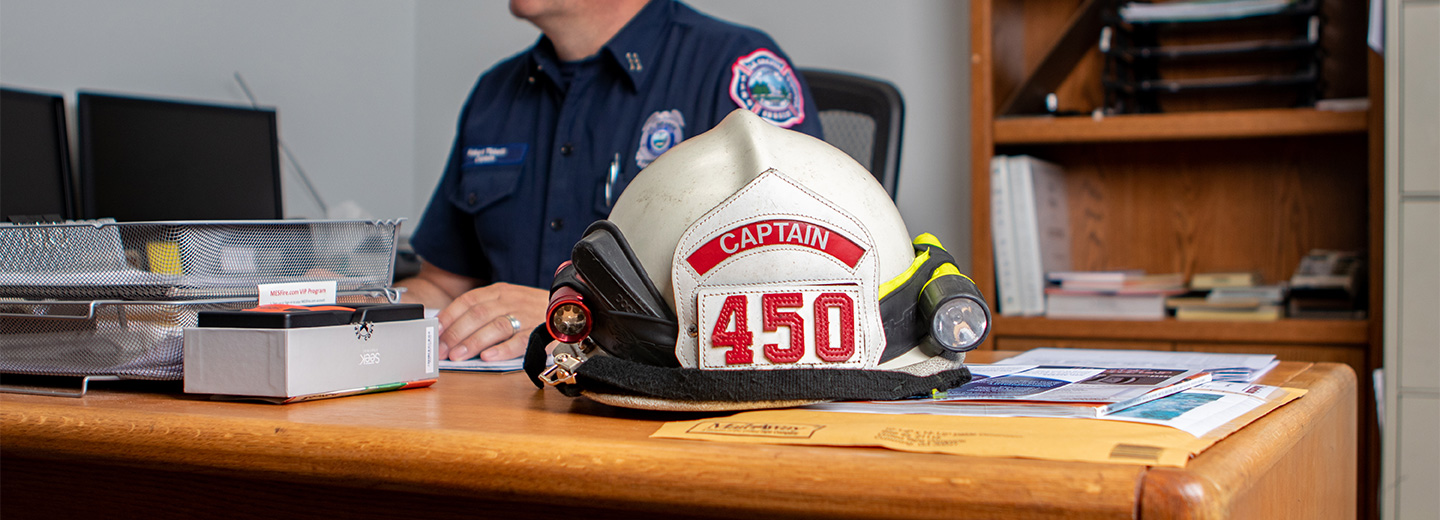
Advance Your Fire Service Career with a Bachelor’s Degree
National FESHE Model Curriculum
Led by Fire Chiefs and Pros
Wildland Track Option
Learn More Today
Complete the form to learn more about this program.
- Duration 4 years
- Cost per Credit $329
- Credit Hours 180
Program Benefits
- Nationally recognized FSA program
- Flexible, online learning format; no on-campus visits needed
- Meets Oregon Department of Public Safety Standards and Training
- Multiple transfer pathway options
- Transfer up to 45 credits
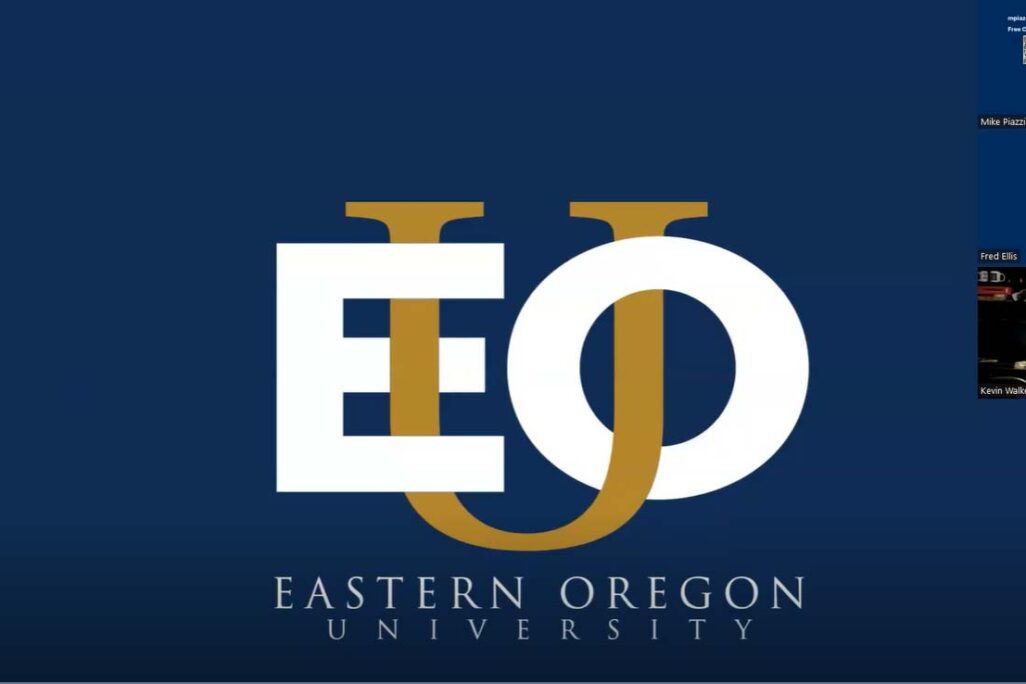
FRED ELLIS: Hello, everyone. We appreciate you joining this webinar. We look forward to spending this time with you. I am Fred Ellis, and I’m one of the Education Liaisons at Eastern Oregon University.
I’m very excited about this opportunity to share more about our FSA and EMSA degree programs, but for this webinar session, I will serve as your host, as well as share some really useful information later on during the presentation. But today, I have joining me a very important person, that’s Dr. Kevin Walker.
You know, Dr. Walker is a renowned expert in the field of fire service and EMS, and he serves as our Chair of these programs at EOU. Very fortunate to get to work with Dr. Walker out in the field, growing and building relationships with certain fire departments, like the Memphis Fire Nashville, Kennewick Fire here, et cetera. So we are very fortunate to have him here today to share with us.
Now, also joining us, I consider another important person, is Mr. Mike Piazzini. Mike and I serve together in the same capacity. You know, we work with Dr. Walker, and we are focused on helping and advising firefighters and paramedics, you know, about becoming an adult learners here at EOU.
Now, Mike will be sharing some ground rules for communication during the webinar to just make sure that all questions get answered. Mike will also be jumping in shortly to share an opportunity that you can take back to your department.
I won’t ruin the surprise, but I can assure you that it is an opportunity for you that you don’t want to miss. Now, we have one more person to introduce to you, although he was not able to join us today– that’s Dan O’Grady. Lieutenant O’Grady is our Regional Advisor for our fire services and emergency medical services administration programs.
You will most likely spend a significant amount of time with him, and we can assure you that he’s committed to serving our FSA and EMSA students. But we will share Lieutenant O’Grady’s contact information toward the end of the presentation.
Now, let’s take a glance here at the agenda. It covers some items that you need to know before I pass it on to Mike. So here, we’ll discuss here today our programs, which is the FSA and EMSA program. We will give you a sample, or discuss, a little bit about the courses you will take.
And most of the content here will come in this piece here with the transfer credit options. We are really excited about rolling out a platform here, which is called the Credit Predictor Pro. You’ll learn more about that. And then last, we’ll talk about the online experience, and of course, why you should choose EOU. So Mike, take it away.
MIKE PIAZZINI: Thank you, thank you, Fred. So there are several different ways that you can stay engaged with us during this presentation. The first of which you can use the chat box or the Q&A button, which is provided to us by Zoom.
We’re going to try to get to all the questions asked at the end of the presentation, but I’ll be monitoring the chat. If there’s anything that can be answered real quickly, I’ll interrupt the speaker and they’ll answer that question. But if not, we’ll try to get most of those answered at the end.
We also have an education survey that we’re inviting all participants to engage in. We want to learn more about you all, your education interests, how a degree may affect your career. And all that information is really helpful for us, because we use that information to help design our program and make sure it’s stayed up-to-date with people that are in the field.
And so you’ll get that link for the Education Survey. We invite you to complete it, as well as share it amongst your departments because the incentive we have to complete it is you can win lunch for your station. And the more people that fill it out at your station, the higher the chances of winning that lunch there.
So I definitely encourage you to do that as well. You can also learn more about the programs. If you find enough information today where you want to take the next step, perhaps apply. You can request information by submitting a Credit Evaluation, visiting our websites, and we’ll also have our contact information at the end of this presentation as well.
But that kind of wraps up the introduction section. Let’s jump into the meat of everything. I’m going to pass the ball over to Dr. Kevin Walker to talk about his programs.
DR. KEVIN WALKER: OK, nicely said. I’m Dr. Kevin Walker. To my students, to the majority of you, I’m just Kevin; except for my on-campus, I make the kids be a little more polite. I started in the Fire Service Administration program as instructor in January 2005.
In 2010, I was asked to become a full-time tenure track faculty member in the program. A few years later, I have a strong EMS background. I was a paramedic back in the day, and there was a need for a similar program in Emergency Medical Services.
The NFA had actually created one of those, and I arranged to have that created as a degree program here. And for those that work both sides of the house, or you work fireside, you know, technically you’re a firefighter, but you work the EMS side of the house– it’s very easy to double major in FSA and EMSA.
Three of four of the classes cross list. So if you want both, that’s actually pretty easy to do and you can do it within normal– I call it normal time through the program, in what you consider from beginning to end, if you came with no credits, four years.
Otherwise, if you came in with an associate’s degree or enough stuff piled up, generally, it’s a two plus two. We do run year round, this is not a cohort program. You can start– and we’re on the quarter system. So for those that are not familiar with that, there’s a fall winter, spring, and summer quarter. They last about 10 weeks with a finals week after that, and you roll right into the next one.
And I’ve structured the fire program so at any one of those quarters you come in, you are right on track. EMSA, basically, if you don’t take it in one term, you got to wait a year to get the next EMSA class. That’s surely not too big a deal.
So we also offer– if your career is leading you in, like, there’s another degree that fits your career path, you can also do a minor in FSA or EMSA. I had a number of requests for that, so I did put that into place. All but one of the classes are 3/4 credits long.
So what’d you say in a– if you were going, say, full-time, you know, you’re talking 12 to 15 credits a term. You are not required to do it. There are no minimum hours. A lot of it, if you have a family, if you have, you know, you’ve just moved into a new position, I don’t recommend that you start out with a full load because I’d rather you not go nuts, being overloaded.
Start with a couple of classes. See how that fits in with your family, with your workload. And if that’s working for you, then you can just keep ramping it up. That’s not a problem. If you need to stop out for a while, it’s not unknown to have somebody get a promotion, you’re on a probationary period, and some departments can’t be taken any classes until you clear your pro-b period.
Not a problem. You just step out for however long that time is, and you come right back in. No questions asked, no fuss, no muss. And if you’ve taken trainings through the National Fire Academy, you’ve picked up stuff in the military– any place that you have picked up some sort of certifications, licensures, things like that, I want to know about that, because if there’s a way for us to apply that to your degree, I don’t want you repeating stuff.
If I can find a way to shoehorn it into your degree, and shorten your time and money, we’re going to do that. I don’t believe in that, yeah, well, you didn’t take it from us. So that’s really important in our program. Mike, do you have another slide?
MIKE PIAZZINI: I do, I do. And it’s actually a good segue, it’s about accelerated credit options.
DR. KEVIN WALKER: OK, this is what we just said, the accelerated credit options. I oversee about 90% of that at EOU, so this is where you’re going to send us anything that you’ve got. Any certificates, any licensures. If you have taken classes through NFA, send us your, well, technically your FEMA transcript.
Anything you can send us, we’ll evaluate it. Done something that you didn’t get a piece of paper for, but there was learning involved? That’s where we can use a Pell. You know, write an essay.
If you’ve got a background in something that’s a class that you would require here, then we’ll tell you what you need to put in there to demonstrate it, and then we’ll go ahead and see if– you know, I’ll say, all right, here’s the course outcomes. You explain what you’ve done, give me your bona fides for those outcomes, and if I agree that you sufficiently met them and understood them, I will apply that to whatever that class is.
MIKE PIAZZINI: That’s perfect, that’s perfect. And a lot of folks might be thinking, how can I get started with that? Does EOU make it easy for me to submit their stuff to, to you, Doc? And that’s what this next slide goes over. Can you tell us a little bit about Credit Predictor Pro?
DR. KEVIN WALKER: Yeah, Credit Predictor Pro is a new piece of software. We’ve contracted with a national entity, and essentially, you go to a website and the QR code will actually take you to Credit Predictor Pro. It’s going to show you a screen, and the screen is going to say, upload any license you have. Upload any certificates you have. Upload your resume.
There’s about 10 things on there to kind of jog your memory. And in the database, there’s a lot of things in there, and there’s about another 800 or 900 I’m going to put in here over the next few weeks, but like, for example, you see on the screen various courses. Firefighter I and II, ICS 300 and 400. Blue Card, pick your stuff.
Of course, you recognize all the R coded stuff or NFA codes. And of course, all the alphanumeric versions of that. All of those things have been evaluated by ACE, and they’ve been evaluated for college course stuff. And so I’m plugging all of that in, and all you have to do is make this your list of what you’ve got.
And if when you turn it in, and you think, oh man, I forgot something– it’s not a problem. Log back in to the account you create there, and just upload it if you remember something later. And that will get routed to one of us. And if it’s already in the system, it’ll say, all right, well, that’s worth x amount of upper and lower division college credit.
For a lot of these, if they’re NFA stuff, it’s usually a range of credits depending on which series you took. And at the end, it’ll give you an idea of how many potential college credits that’s worth, and it’ll multiply that by whatever the current tuition is to give you an idea about what you might possibly save in time and money.
Now, it’s not official, but a faculty member is going to have to actually put the officials on it. And in this case, it’s always going to be me at the end of the day. But believe me, I am well aware of these. And if you come up with something that is not in the system, I will figure out what it is, and whether or not we can use it.
And if it’s something that it’s legitimate, but it won’t help you in your degree plan, because it’s already covered by something else you’ve already done, I’m not going to say, oh yeah, hey, pay X amount of dollars, you put it on your transcript, but it doesn’t help you. But hey, it’s there. I don’t believe in that. It’s a waste of time and money.
This is an easy way for you to put stuff up, and let us evaluate it real quick, get an idea of what’s going on. So we can start plugging it into a degree checklist and help you figure out the fastest, least expensive way to getting your bachelor’s degree.
MIKE PIAZZINI: Awesome, awesome. I think on the next slide, we have a visualization of what Credit Predictor Pro looks like. Sometimes it’s kind of an intimidating thing to think about, but it’s really a user friendly experience. Is there anything on this screen, Dr. Walker, that you wanted to note?
DR. KEVIN WALKER: One of the big things– and I added this into the system– but you see where, like, here Fred created a profile on here, so he could see what it looked like. And you’ll see “Welcome, Fred Ellis, start now.” Here are the sections. So all you do is fill stuff out.
If you’re fluent in another language, then say what. If not, you ignore it. Upload your current resume, any skills. The database comes preloaded with a lot of stuff. If there’s something you know how to do that’s not in there, this is– otherwise, you can just go click, click, click, click, click. If it’s not in there, add it.
Credit By Exam, if you’ve taken exams for something like you tested out of math or something, this is where you can put stuff in there. Got a military transcript? And a lot of my students are veterans, whether current military or separated, upload it.
If– and let me make this point– if there’s anything on your military bona fides that’s stamped all like, you ain’t allowed to know this, this is classified, that is not a problem. The military, the Defense Department, set-up a place where I can upload that, and it will take that and it will plug-in all the secret things you did that have college credit. And I’ll get, essentially, what amounts to a pseudo academic transcript.
Because hey, if nobody needs to know some things you did because you weren’t there, and you didn’t do them, that doesn’t mean you didn’t learn stuff. I will just be told what happens when we can plug them in. All those certifications, any certs that you’ve picked up from training, and in our world you can end up with a suitcase full.
Now, then we get to things like this– Informal Learning. If you’ve done stuff that wasn’t– you didn’t have a teacher, you didn’t have a classroom, you didn’t get a piece of paper that said you did something, but you taught yourself how to do something, right, anything like that, put it in here.
That way, it lets us to have a chat about it and say, wait a minute, I think that’s probably worth– and I can do something, and then life experiences. That does not mean, tell me you mowed the grass and I’m going to give you biology credit, because that ain’t a thing. Not at this university, anyway.
But if you’ve done stuff, it was your job and you learned how to do it, and some people would have to go to school, or they got to go to a training to do that, let us know what that is because we’ll try to find a way to get that plugged in, if you can use it.
So as you see, it’s really not difficult. And if it doesn’t apply, skip it, go to the next. And once you Submit, you do get the option of– you see over in the left over here where it says Profile, where you can complete and submit?
If you say, I’d really like to have EOU take a look at this right now and say, like, kind of tell me where I’m at, maybe get a phone call, you can do that. If you just want to start working on this and getting some quick and dirty ideas about where you’re at, you can just say, you know, well, I don’t want to be called right now, just give me some ideas. And then you can always go back later and say, hey, would one of you give me a call, and we’ll start talking about this.
So it’s not like one of those places where they drag you in, and fill this out for– and be in with a drawing about 10 billion other people for $25 gift certificate. It’s not like that.
MIKE PIAZZINI: Perfect, perfect. Yeah, and I think what’s really important to mention about this is, you can do this for programs outside of the Fire and EMSA program.
DR. KEVIN WALKER: Any program at EOU.
MIKE PIAZZINI: Yeah, and that’s what Fred’s going to talk about next is, regardless of what program you decide to choose, what that environment looks like at EOU, not all online environments are created equal. But I like to think that EOU’s is really awesome, and Fred’s going to share more about that right now.
FRED ELLIS: All right, thanks Mike, thanks Dr. Walker. I think our audience can definitely take advantage of all the EOU’s transfer options, and definitely the new Credit Predictor Pro platform. I think it’s just really an easier process for everyone. We love to help you navigate that.
But now as we get a little closer to closing things out, we just have two more slides we can start, and then we can start answering some questions. So why choose EOU? Not only have you heard directly from our Chair, who has the experience, but we feel there are many reasons why you should choose EOU.
First, our accreditation. Eastern Oregon University, right, we have been continuously accredited since 1931 by the Northwest Commission on Colleges and Universities. So we do have the history and the resources to be around for the foreseeable future.
Our programs are always affordable. In fact, the tuition and fees average thousands less than other public and private institutions, definitely in our region. But I know most of the time, we ask, how do I pay for college? And my thought, there are a lot of ways to offset the cost of your education. Definitely with our APL and ASL transfer options.
But just let us help you with that. We can connect you with someone who can assist. We do have one of the most generous transfer policies in the region, which allows up to 135 transfer hours from another accredited university. But as Dr. Walker mentioned, the difference between a quarter system and a semester system– basically, quarters provide a shorter term.
It allows you to complete more hours over the course of a year. And this gives you an opportunity to focus on the lesser amount of courses at a time. So we can help you digest that as well. Your coursework here, the flexible schedule. You know, we’re asynchronous. So just feel free to study whenever, wherever on your own time.
We do want our students to have that work and family life balance. And last, we are really interested in your goals and career outlook. So there will be advising before and during your time with EOU.
So we really hope you enjoyed the information we shared. I hope it was helpful. As we say thank you for– we really would just, basically, like to say thank you for your work you are doing, and helping keep our community safe. So Mike, you can close us out there.
MIKE PIAZZINI: Thank you, thank you, Fred. So as I mentioned before, there are some opportunities to continue to stay engaged with Eastern Oregon University. The first of those is very important to us. It’s an Education Survey.
We want to know more about you all– everyone in attendance, everyone that wasn’t able to attend, and we’re doing so by conducting an Education Survey. We want to evaluate some of your interests, you know, is EOU of any value to you? What could we maybe change to make it more valuable to you?
Those are all things that we want to know, and we encourage you to share that QR code, in the link you’ll get in an email after this, with everyone at your station to increase the chances of winning a lunch as well. That Education Survey’s purpose is not to store your information and send you emails, that is not what that one’s for.
The second QR code is where you can learn more information. If you thought you learned enough today that you want to take the next step, you can click on– or you can use this QR code to visit our website to request additional information. Or if you’re not the type of person to visit websites and read through all this information, you have specific questions that you can’t ask here today, you can contact us at these emails.
Fred’s is the top one, myself is the middle one, and then we have our advisor who is unable to make today’s session, Dan O’Grady, their email is at the very bottom. So just kind of in sum, Education Survey for Everyone, share that as much as you’d like.
If you’re interested in learning more, you’ll use that second QR code. Or if you have some specific questions, feel free to send us an email as well.
Hear from our Team
Watch Our FSA Virtual Info Session Here
As you learn about our B.S./B.A. in Fire Services Administration program, meet some of the support you have with EOU Online.
Nationally Recognized, Affordable Fire Science Degree Online
Earn an award-winning, nationally recognized fire services administration degree. Eastern Oregon University’s FSA program is delivered 100% online and is NFA Fire and Emergency Services Higher Education (FESHE) compliant.
Our curriculum provides exceptional training in fire services, including hazard prevention, communication, critical thinking and civic engagement (including hazard mitigation). You’ll benefit from fire science knowledge, skills and abilities aligned with the National Fire Protection Association’s Standard for Fire Officer Professional Qualifications.
Attend full-time or part-time online with a flexible, career-focused program. We work with you to leverage previous college credits and work experience and secure scholarships. Graduate ready to pursue a variety of emergency services careers, like dispatcher or fire chief.
We also offer a Wildland track designed for wildland firefighters ready to earn a bachelor’s degree.
Professional Associations
The bachelor’s in fire services administration at EOU has many professional associations.
- Meets model curriculum from U.S. Fire Administration’s nationally-recognized Fire and Emergency Services Higher Education (FESHE)
- Oregon Department of Public Safety Standards and Training
- Meets standards established by the National Fire Protection Association NFPA 1021: Standard for Fire Officer Professional Qualifications
- National Fire Academy featured provider
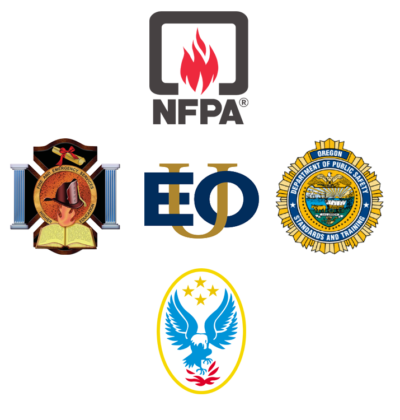
Core Curriculum
We require a core of lower- and upper-division courses. Lower-division courses include principles of emergency services, and a series of courses about fire behavior, strategy and prevention.
Upper-division courses include more information on administration, analysis and management. You will also learn about disaster planning and control. Electives can include business, psychology, economics, writing and more. Earn your B.A. with 8 foreign language credits, or your B.S. with just 12 more science credits.
EOU’s online fire services degree includes a 24-credit Wildland track option. This pathway is designed to meet Interagency Fire Program Management (IFPM) GS-401 Fire Management Specialist position supplemental standards.
All core lower-division FSA classes are offered online once per year. All core upper-division FSA classes are offered online at least twice per year. FSA electives are generally offered once per year.
Have Credits to Transfer?
The option to transfer credits makes your program more affordable and can help you get on the job sooner. We allow up to 135 credits from previous college coursework to be transferred into EOU. All EOU majors require a minimum of 20 EOU credits.
Students who choose the Wildland track can also receive transfer credit for Wildland Interface Fire Fighter (FFT2) and/or Advanced Wildland Interface Fire Fighter (FFT1) certification. Certifications must comply with National Wildfire Coordinating Group (NWCG) standards to apply.
To see how your credits will transfer, use our Transfer Equivalency tool.
Career Outlook
According to PayScale, the average annual salary for fire chiefs is $79,284, with the most experienced professionals in the role earning up to $125,000 per year.1 The online bachelor’s in fire service administration program will prepare you to become a fire chief, and also to lead successfully in emergency situations through a variety of other in-demand careers.
Discover the professional opportunities that await you as a graduate, and embark on the pathway to career success with EOU Online.
Explore CareersProgram Outcomes
- Develop management skills
- Learn from current and former chief officers
- Apply administrative techniques
- Manage personnel
- Create a capital budget
- Understand state and local government relationships
- Provide opportunities for career advancement
- Know how to handle structure fires, wildfires and aviation fires
- Practice fire investigation
“I would strongly recommend EOU’s FSA program, in particular for experienced fire service professionals. I continued my coursework while working as an Assistant Chief, and it was incredible how often what I was studying was directly applicable to some challenge or project I was engaged in at work. Everything from the Legal Aspects of the Fire Service and Advanced Legal Aspects has been useful.”
– Chief Holly vanSchaick, Fire Chief
2023 EOU Graduate, B.S. in Fire Services Administration
Tuition Details
We feature affordable tuition, especially when compared to similar universities. The total cost of your program (assuming no transfer credits) is $59,148. The cost per credit hour for EOU online courses is $329.
About 92 percent of online students benefit from financial aid and scholarships to cover part of these costs.
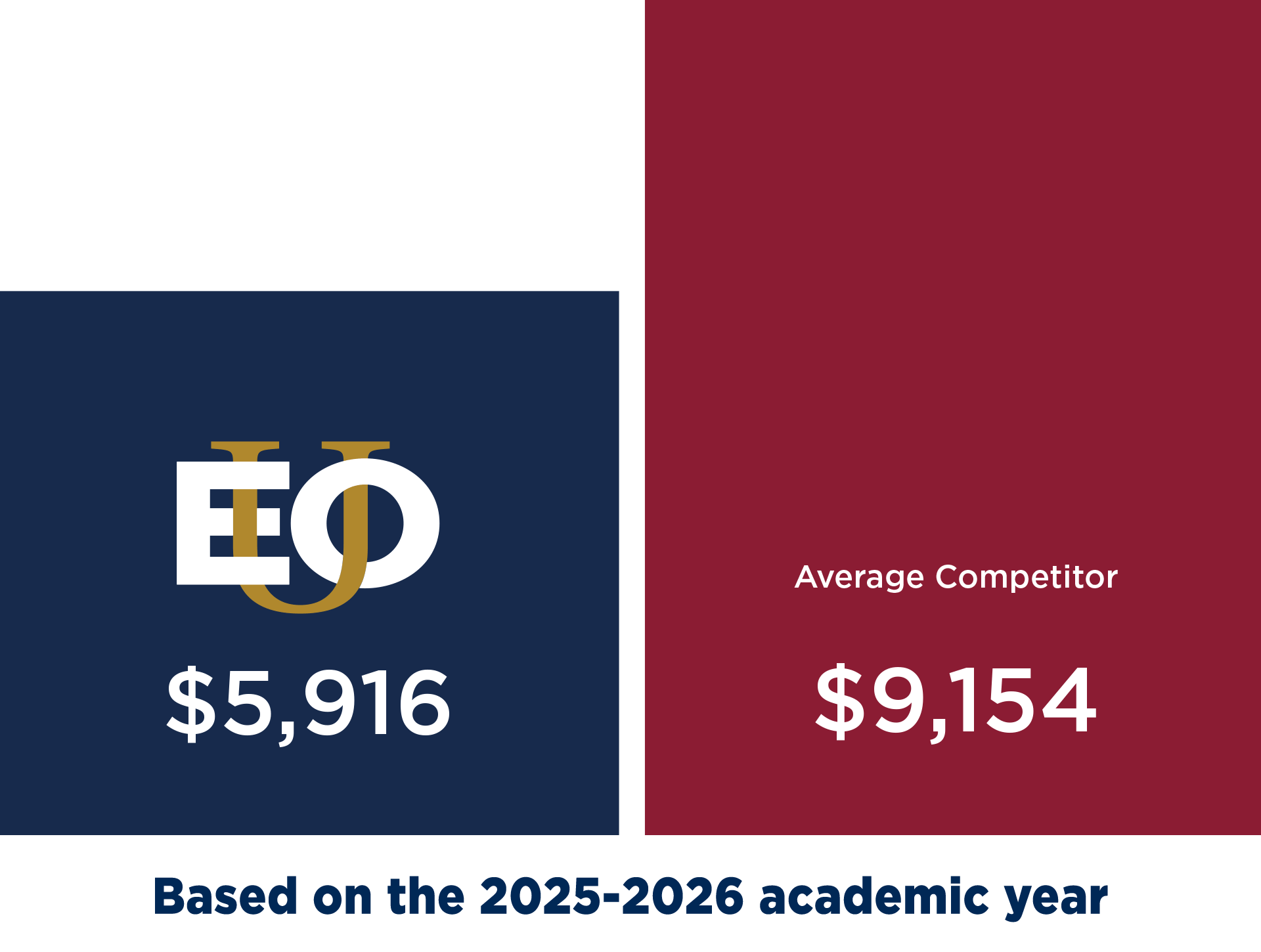
Based on 2025-26 academic year. Average competitor is based on a sampling of similar undergraduate regionally accredited universities at 18 credit hours per term.
View Tuition DetailsLearn More About Your Financial Aid Options
Your education is an investment in your future. We take your commitment seriously and are here to support you in finding ways to pay for your degree.
Options to consider are:
- Loans
- Grants
- Scholarships
- Employer Benefits
What It’s Like to Study Online
Earning your degree online at Eastern Oregon University is a great opportunity because there are no on-campus requirements. You will have access to the same professors, content and opportunities as on-campus students, only in a creative digital format. Our professors work on campus and are professionals and experts who are trained to deliver innovative, engaging online education.
Online ExperienceTop Recognition for EOU Online
Earn a quality education online from a highly-respected and awarded institution. Eastern Oregon University’s degree programs have received considerable recognition such as Colleges of Distinction, Value Colleges, College Choice and Military Friendly.
Frequently Asked Questions
Here are the answers to a few frequently asked questions about this program.
- Meets model curriculum from U.S. Fire Administration’s nationally-recognized Fire and Emergency Services Higher Education (FESHE).
- Oregon Department of Public Safety Standards and Training
- Meets standards established by the National Fire Protection Association NFPA 1021: Standard for Fire Officer Professional Qualifications.
- National Fire Academy featured provider
EOU accepts applications throughout the year, with deadlines in the fall, winter, spring and summer. To learn more about the application requirements, visit our Admissions page.
If you want to become a fire chief, the B.S./B.A. in Fire Services Administration would best fit your needs. Learn more about this degree on the program overview page.
The 24-credit Wildland track is an optional course pathway. Students can replace lower division requirements with coursework designed for wildland firefighters, specifically, those seeking to meet Interagency Fire Program Management (IFPM) GS-401 Fire Management Specialist position supplemental standards.
Yes, you can complete this program entirely online. However, some upper-division courses in the FSA program are occasionally offered as on-site weekend hybrid courses in Eastern Oregon, Southern Oregon and the Portland, Oregon region.
You can complete the program in just four years. To see the curriculum, view our courses page.
¹Average Fire Chief Salary. May 3, 2021. Retrieved May 26, 2021, from https://www.payscale.com/research/US/Job=Fire_Chief/Salary
